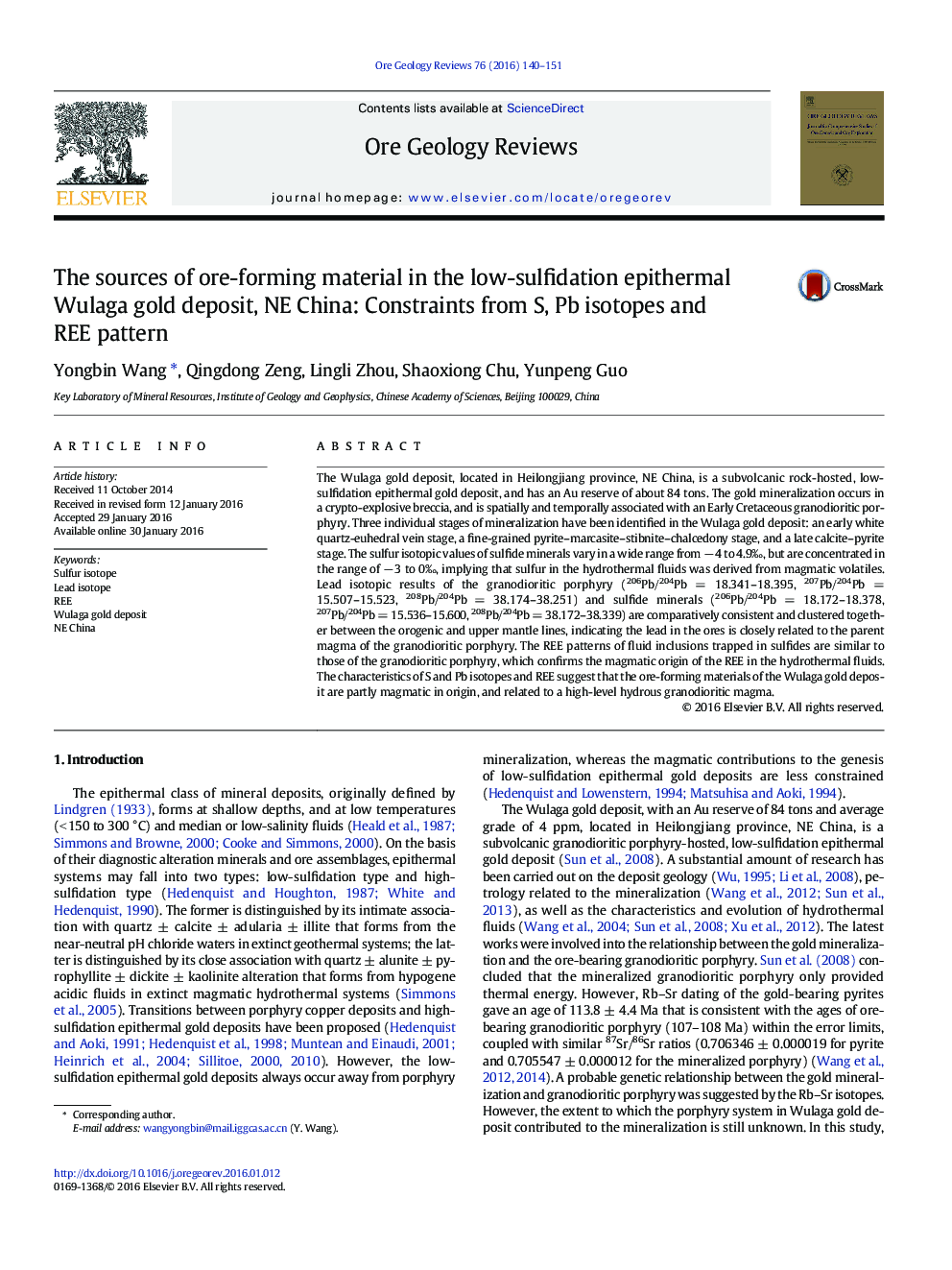| کد مقاله | کد نشریه | سال انتشار | مقاله انگلیسی | نسخه تمام متن |
|---|---|---|---|---|
| 4697068 | 1637230 | 2016 | 12 صفحه PDF | دانلود رایگان |

• The Wulaga deposit is a granodioritic porphyry-hosted, low-sulfidation epithermal gold deposit
• The sulfur isotopes imply that the sulfur was derived mainly from magmatic volatiles
• The lead isotopes imply that the lead was related to the parent magma of the granodioritic porphyry
• The REE pattern may reflect that the REE were mainly inherited from the granodioritic porphyry.
The Wulaga gold deposit, located in Heilongjiang province, NE China, is a subvolcanic rock-hosted, low-sulfidation epithermal gold deposit, and has an Au reserve of about 84 tons. The gold mineralization occurs in a crypto-explosive breccia, and is spatially and temporally associated with an Early Cretaceous granodioritic porphyry. Three individual stages of mineralization have been identified in the Wulaga gold deposit: an early white quartz-euhedral vein stage, a fine-grained pyrite–marcasite–stibnite–chalcedony stage, and a late calcite–pyrite stage. The sulfur isotopic values of sulfide minerals vary in a wide range from − 4 to 4.9‰, but are concentrated in the range of − 3 to 0‰, implying that sulfur in the hydrothermal fluids was derived from magmatic volatiles. Lead isotopic results of the granodioritic porphyry (206Pb/204Pb = 18.341–18.395, 207Pb/204Pb = 15.507–15.523, 208Pb/204Pb = 38.174–38.251) and sulfide minerals (206Pb/204Pb = 18.172–18.378, 207Pb/204Pb = 15.536–15.600, 208Pb/204Pb = 38.172–38.339) are comparatively consistent and clustered together between the orogenic and upper mantle lines, indicating the lead in the ores is closely related to the parent magma of the granodioritic porphyry. The REE patterns of fluid inclusions trapped in sulfides are similar to those of the granodioritic porphyry, which confirms the magmatic origin of the REE in the hydrothermal fluids. The characteristics of S and Pb isotopes and REE suggest that the ore-forming materials of the Wulaga gold deposit are partly magmatic in origin, and related to a high-level hydrous granodioritic magma.
Figure optionsDownload as PowerPoint slide
Journal: Ore Geology Reviews - Volume 76, July 2016, Pages 140–151